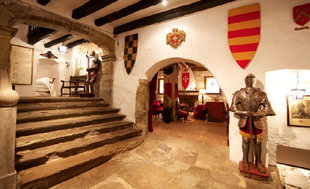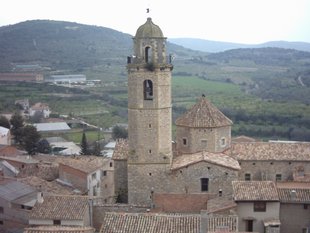La Noguera and Catalonia’s history
La Noguera county is one of the least densely populated in Catalonia, but at the same time it has an astonishing richness in natural and historical heritage. This journey into the past can begin with a visit to one of the many vestiges of various prehistoric times. Cve paintings are to be found in the Vilars cave, in the municipality of Os de Balaguer, and also in the Parco cave, in Alòs de Balaguer. Not far from there, on the hill of Monteró, in the municipality of Sant Llorenç de Montgai, we can discover the remains of an Iberian village, along with other settlements of Roman origin.
For many years, La Noguera was a border area between Old and New Catalonia. The historic County of Urgell was born in the Pyrenees and spread to the south, conquering the Muslim villages in its way as far as Balaguer and Lleida, and raising castles, churches and monasteries that served as borders. The castle of Montsonís and the collegiate church of Sant Pere d’Àger are spectacular testimonies that are preserved from that period of conquest.
Catalonia’s journey towards modernity also passed through La Noguera. In the barony of Rialb, Archduke Charles of Austria found one of his most loyal soldiers in the campaigns against the Bourbons. The Marquis of Rialb, Ramon Frederic de Vilana-Perles de Camarasa, had to go into exile following the defeat of 1714, but he continued alongside the archduke and came to direct the destinies of Europe as one of the emperor’s chief advisers in Vienna.
And it was in La Noguera where two major projects were launched that were to be key in the industrialisation of Catalonia. On the one hand, the construction of the Urgell canal, which can be visited on foot or by bicycle along any of its branches, a project of the industrialist Manuel Girona in the 19th century to make the plains of Lleida the country’s main agricultural pantry. Then, in the 20th century, Camarasa was chosen as the reservoir to build the first hydroelectric power station in the country, the first step in electrifying Catalonia. The tough working conditions of the builders would later spark of a great general strike, which finally ended with the adoption of an eight-hour working day.
Finally, during the Spanish Civil War the front was stuck for eight months on the River Segre, which means that today La Noguera is a region full of war remains, especially around the town of Balaguer. You can visit the bunkers of Palous, the hill of Les Forques, the trenches of the Merengue de Balaguer, as well as those of the Font Amarga and the Pletes (Montgai), among others.
The gold from the Segre
The River Segre once carried gold. Not to the point of provoking a mass pilgrimage of adventurers and fortune seekers like the gold rushes experienced in the US and Canada during the 19th century, but enough to attract some hopefuls. In Balaguer, the Or del Segre interpretation centre tells visitors about the technique used by gold diggers and shows the tools that were used to extract the precious material from the bottom of the river.




